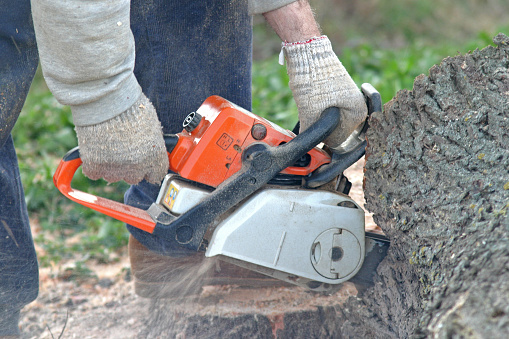These 5 Simple Tree Lopping Tricks
Tree lopping is the removal of branches from a tree, usually to improve the tree’s appearance or safety. Lopping can also be done to remove diseased or damaged branches or to thin out a crowded canopy.

While tree lopping can be beneficial, it can also be harmful if not done properly. Improper lopping can damage a tree’s health and structure, making it more susceptible to disease and pests. It can also make the tree unsafe for people and property.
That’s why it’s important to hire a certified arborist when considering tree lopping. An arborist will have the knowledge and experience necessary to safely and effectively prune your trees. They will also be able to advise you on whether or not tree lopping is the best option for your trees.
If you do decide to go ahead with tree lopping, be sure to choose a reputable company with certified arborists. This will ensure that your trees are properly cared for and that they remain healthy and safe.
These 5 Simple Tree Lopping Tricks
If you’re looking to tidy up your yard, removing trees may be necessary. Tree lopping is the process of removing large branches from a tree, and it can be done for a variety of reasons. Maybe your tree is too close to your house and you’re worried about it damaging your property. Or perhaps you have a dead or dying tree that needs to be removed for safety reasons. Whatever the reason, tree lopping can be a big job. But with these five simple tips, you can make the process a whole lot easier.
1. Choose The Right Time Of Year.
The best time to lop a tree is in late winter or early spring before new growth begins. This will allow the tree to heal more quickly and will minimize the chances of disease or pests attacking the exposed wounds.
2. Make Sure You Have The Right Equipment.
You’ll need a sharp saw and a ladder to reach the higher branches. If you’re not comfortable using a ladder, you can hire a professional tree lopper to do the job for you.
3. Start With The Smaller Branches.
Removing the smaller branches first will make it easier to handle the larger ones later on. Plus, it’ll help minimize the risk of damage to your property (and yourself!) if any of the branches should happen to fall.
4. Cut At A 45-Degree Angle.
This will help prevent water from pooling in the cuts and will encourage the tree to heal more quickly.
5. Be Careful Not To Injure The Tree.
Tree lopping can be tough on a tree, so it’s important to be as gentle as possible. If you’re not sure what you’re doing, it’s best to hire a professional rather than risk damaging your tree beyond repair.
Following these five simple tips will help make tree lopping a breeze. Just remember to take your time, be careful, and always put safety first.
How To Find An Arborist For Tree Lopping
When it comes to tree lopping, it’s important to find an arborist that you can trust. After all, they will be responsible for ensuring that your trees are healthy and safe. Here are a few tips on how to find an arborist that is right for you:
1. Make sure that the arborist is licensed and insured. This will protect you in case of any accidents or damage to your property.
2. Ask for referrals from friends or family members who have used an arborist in the past.
3. Check online reviews to get an idea of what others have thought about the arborist’s services.
4. Schedule a consultation with the arborist to discuss your specific needs.
5. Get a written estimate of the services to be provided.
6. Ask about the arborist’s experience and qualifications.
7. Make sure that you are comfortable with the arborist before allowing them to work on your property.
Following these tips will help you find an arborist that you can trust to provide quality tree lopping services. Or try to visit The Yard tree lopping.
